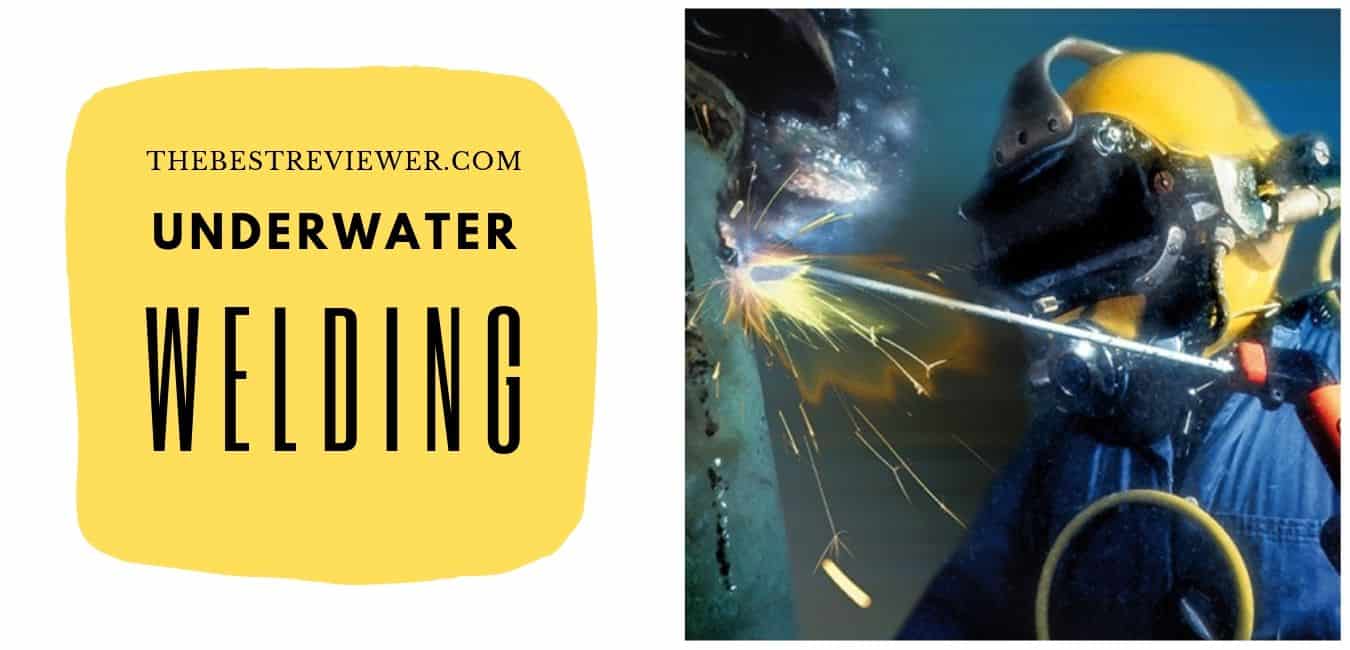Underwater welding, as is clear from the name itself, is a unique form of welding process, and has got multiple applications, which are rare to be worked upon by other conventional methods of welding.
Large numbers of offshore structures such as oil drilling rigs, pipelines, and platforms are installed, and during normal usage or during storms, collisions, which are unpredictable, failure of some of the elements may occur, and any repair work require the use of underwater welding.
For carrying out the process successfully waterproof welding electrodes were introduced, which are quite unique and work as normal electrodes do in normal working conditions.
Contents
Classification of Underwater Welding
Underwater welding can be classified mainly into two forms:
- Wet Welding
- Dry Welding
Wet Welding
As is clear from the name, wet welding is a process performed by direct exposure to the wet environment. Specially designed electrodes are used to perform wet welding, and the power supply is located on the surface connecting to the welder with the help of cables and hoses. However, like open air welding, wet welding is also performed manually. Wet welding is the most effective, efficient, and economical method used, as it provides an increased freedom of movement.
Advantages of wet underwater welding
- Less costly and versatility
- Speedy operation, as readily available machine and equipment are used, and also no enclosures are required.
Disadvantages of wet underwater welding
- Rapid quenching of welded metal takes place as water surrounds the whole area
- Low visibility to the operator
- Inspection of welds is very difficult as compared to the open air welding, so assuring good quality of weld is very difficult task.
Dry welding
Dry welding, also known as Hyperbaric welding, is carried out by creating a chamber, filled with a mixture of helium and oxygen gases for breathing purposes, near the welding area, i.e., structure to be welded, and the welder is supposed to work from inside the chamber. Gas tungsten arc welding process is employed in dry welding and the weld joints created are of high quality, which meet code requirements.
- You may like: Cheap Welding Reviews.
Advantages of dry underwater welding:
- Higher welder safety, as the warm, dry habitat is well illuminated-Welding is performed in a chamber, immune to ocean currents and marine animals.
- High quality weld joints are produced, which are well in comparison with open air weld joints.
- All inspections and preparations are done visually. Also Non Destructive Testing is facilitated by dry welding, which is pretty much important.
Disadvantages of dry underwater welding:
- The process requires huge number of complex equipments.
- The operator needs to be more and specifically trained.
- The process is costly requires an element of precision welding.
Risks and Precautions of underwater welding
- Risk of electric shock to the welder is always there while performing underwater welding. To minimise it, welding should be adequately insulated, and also immediate shut-off of the electricity should be provided for after the arc is extinguished.
- In wet welding, hydrogen and oxygen are produced, so precautionary measures should be taken so that pockets of gas are not built. Both these gases are explosive in nature and can be quite dangerous.

